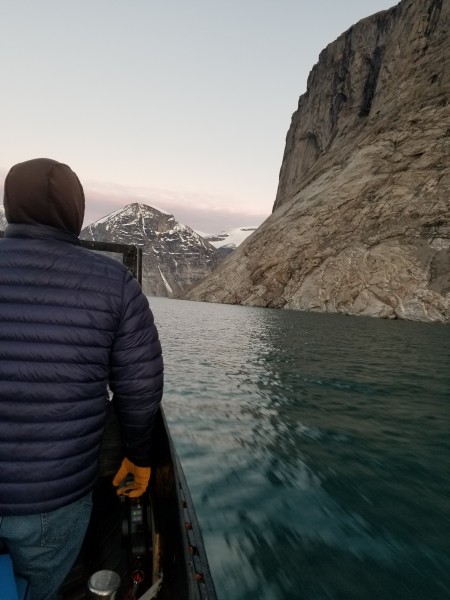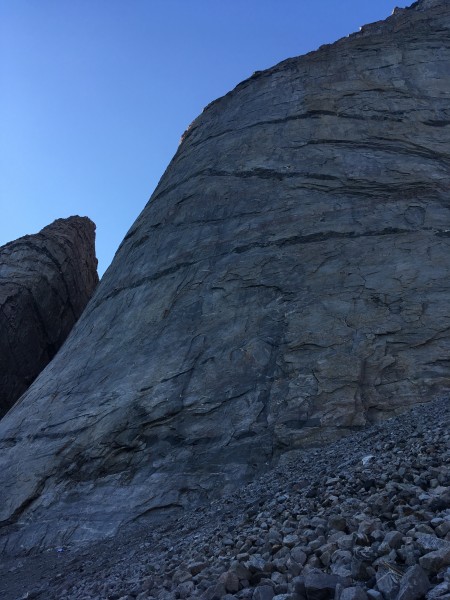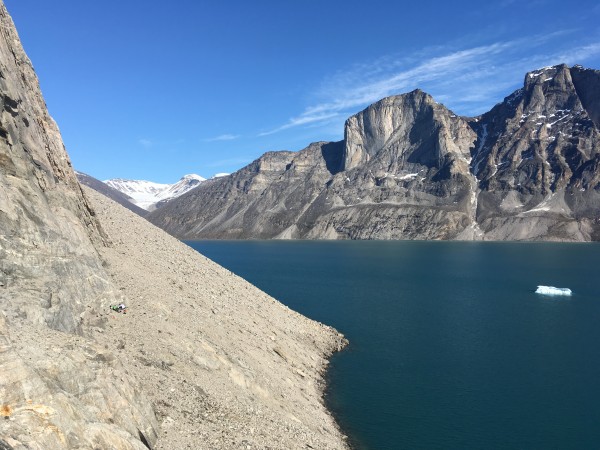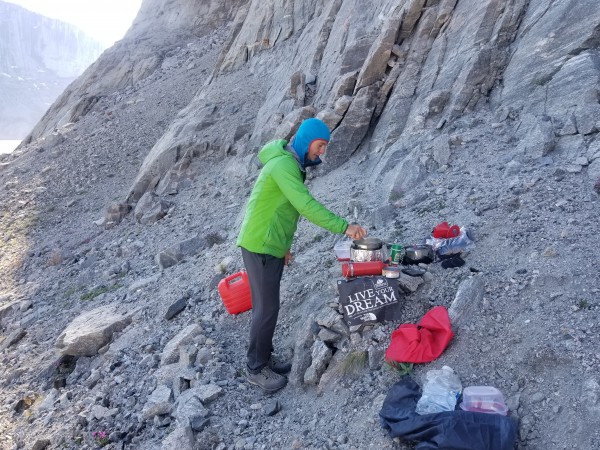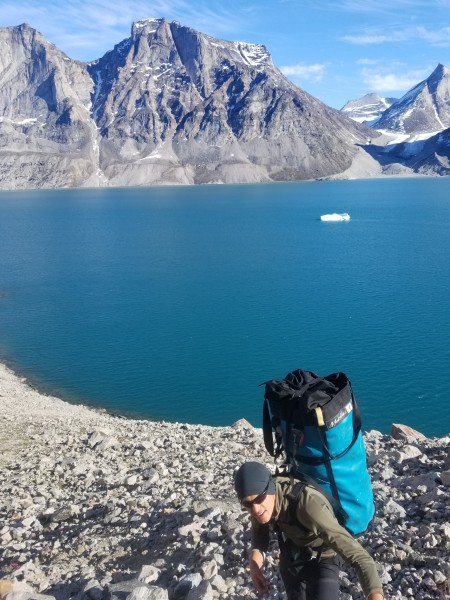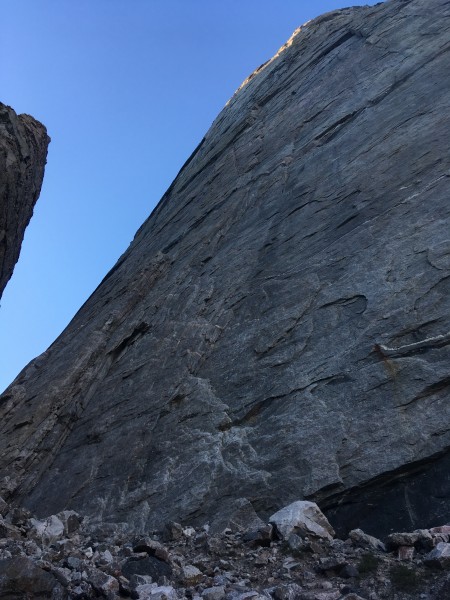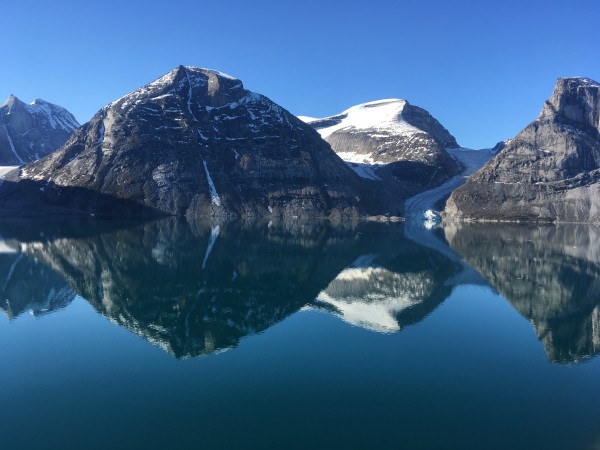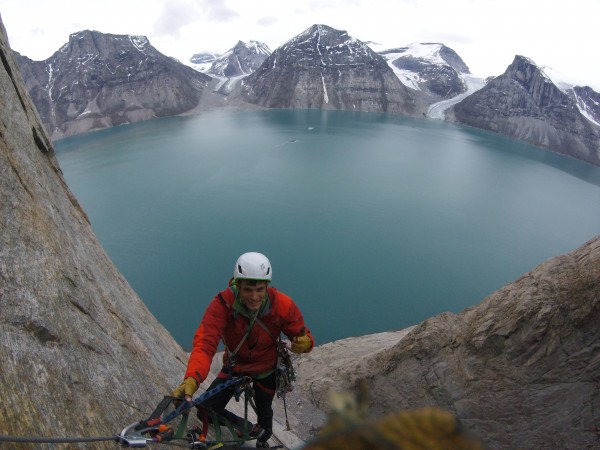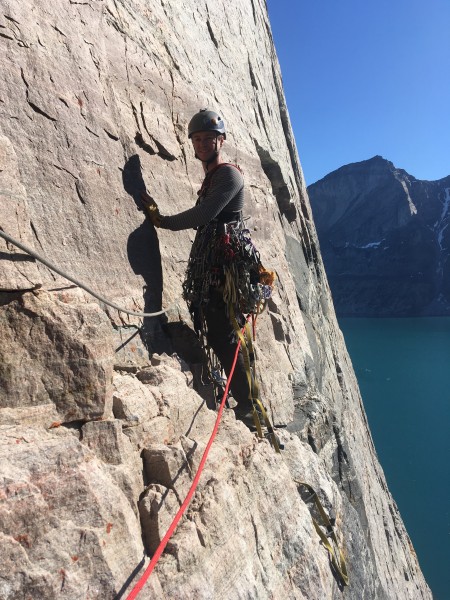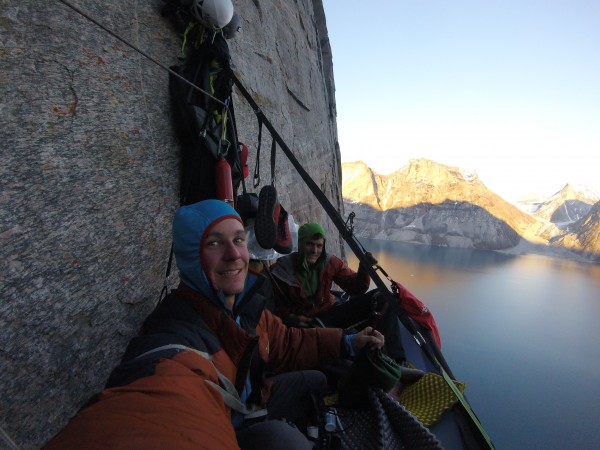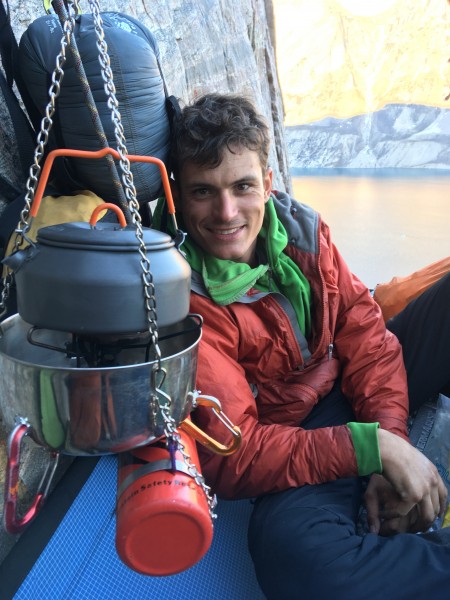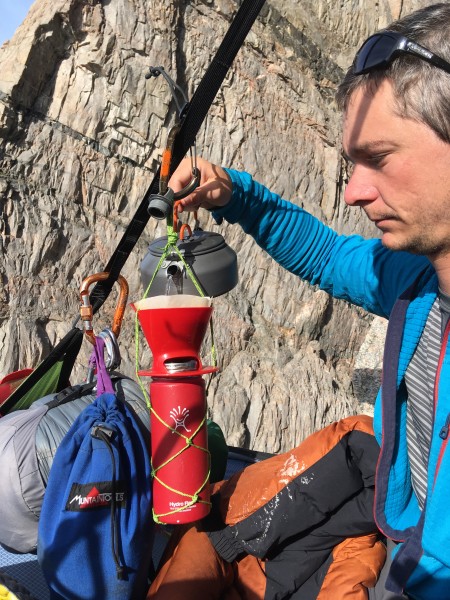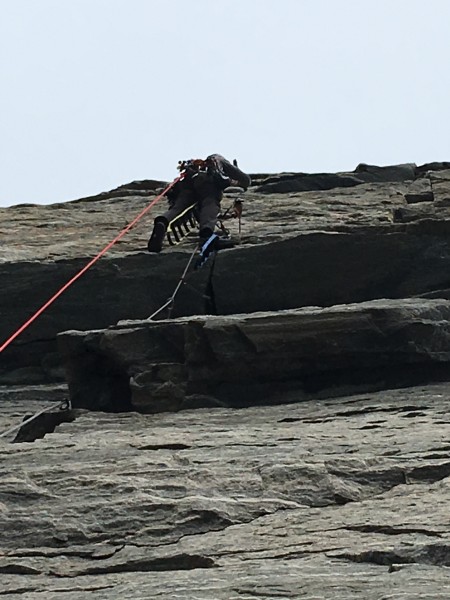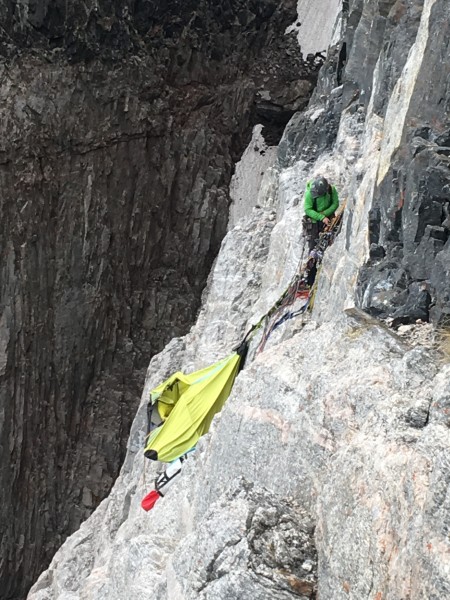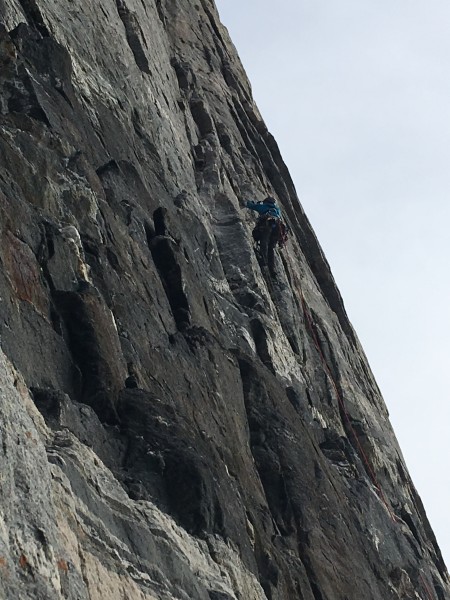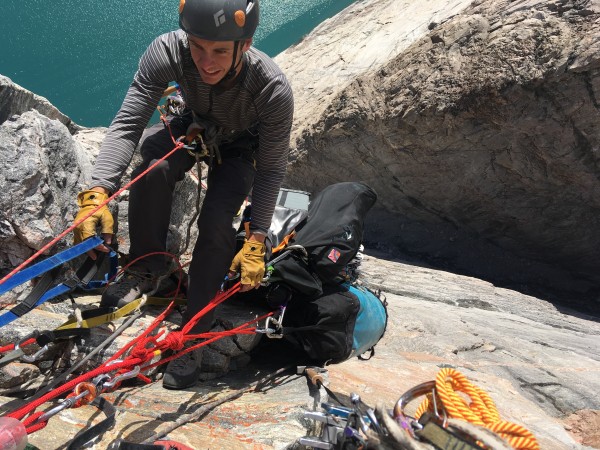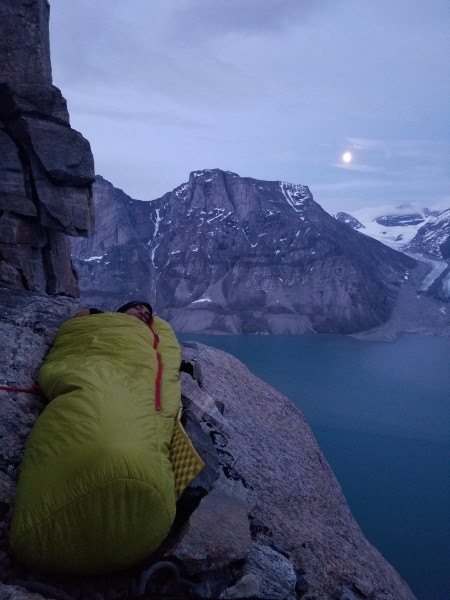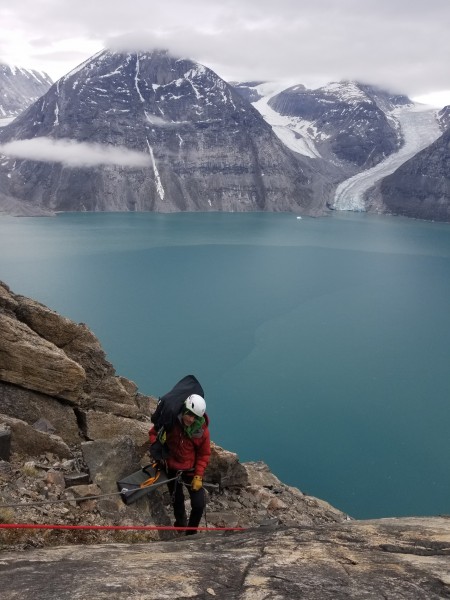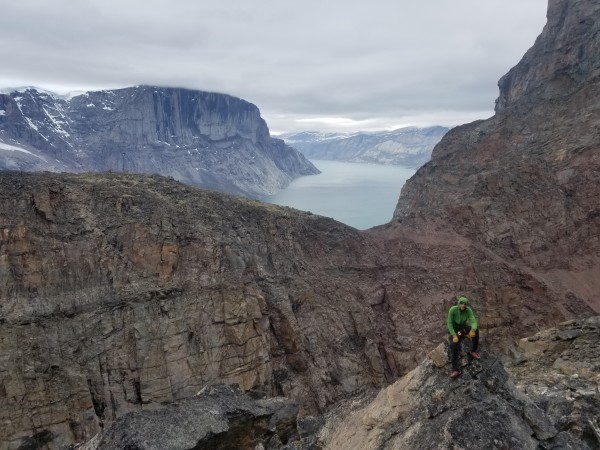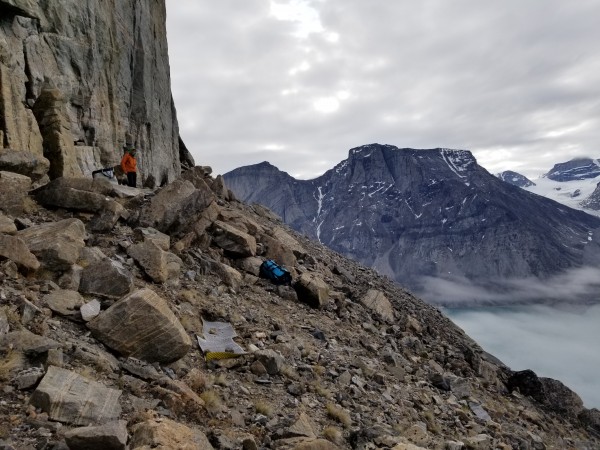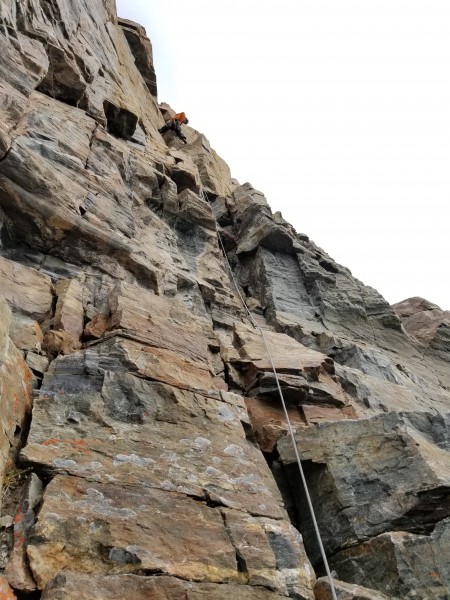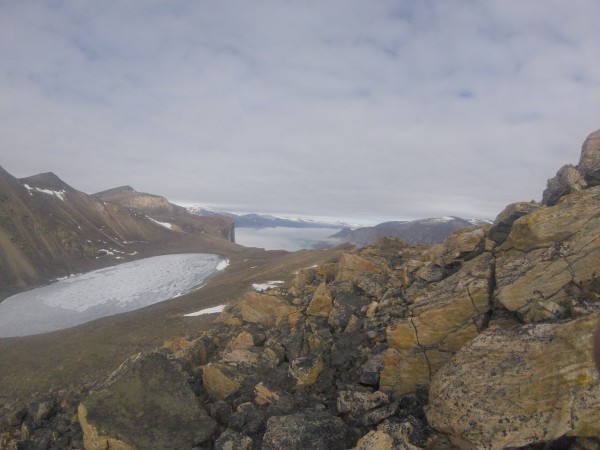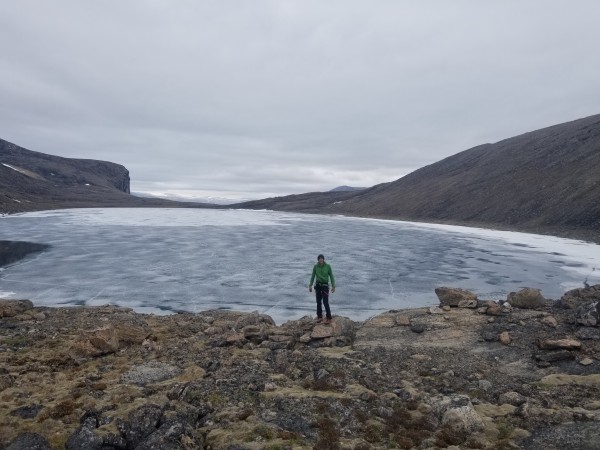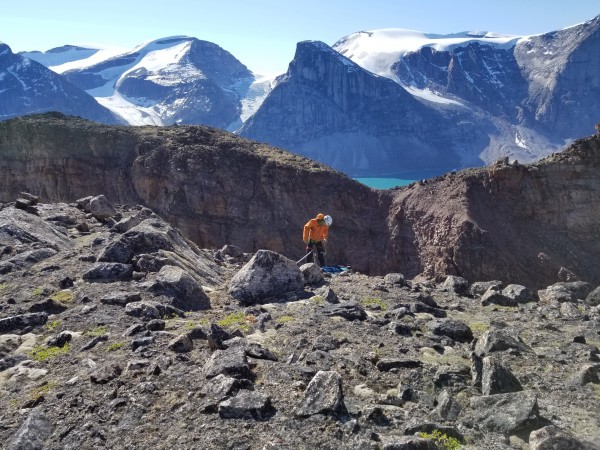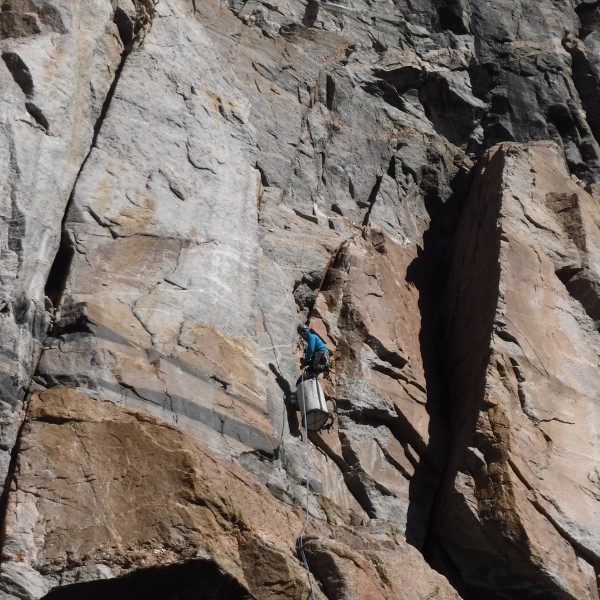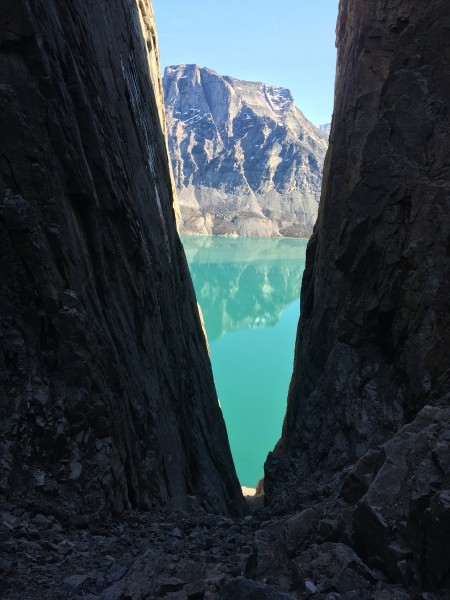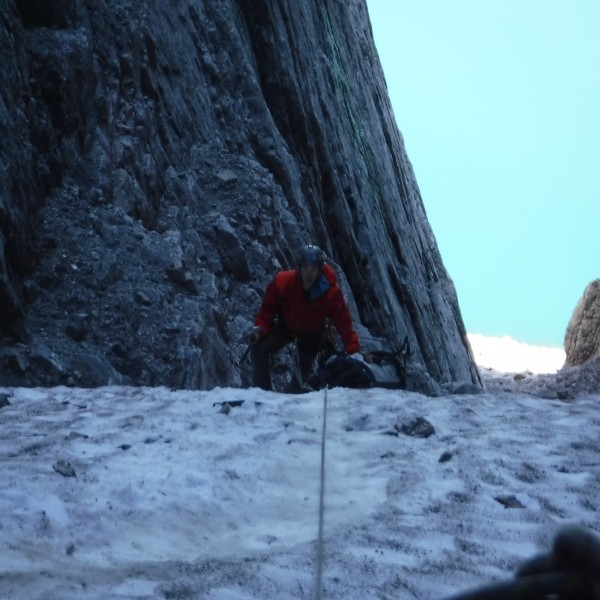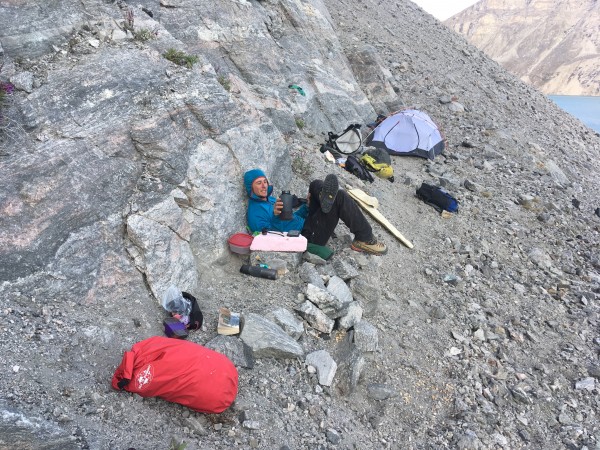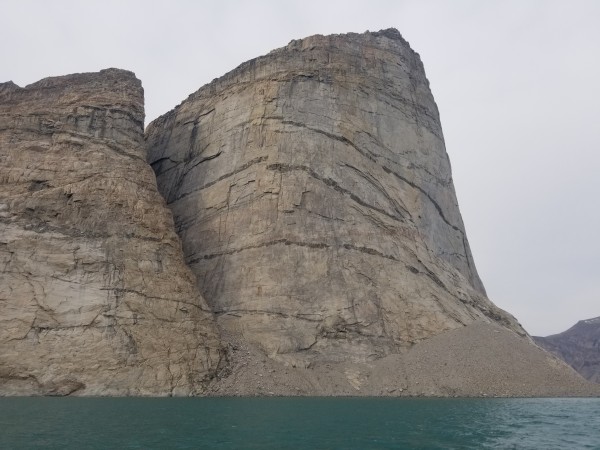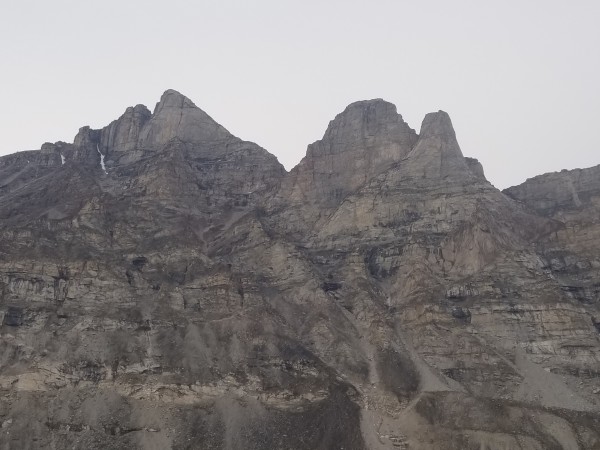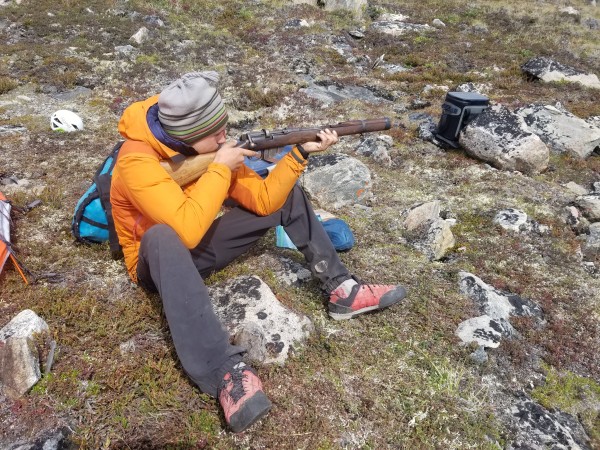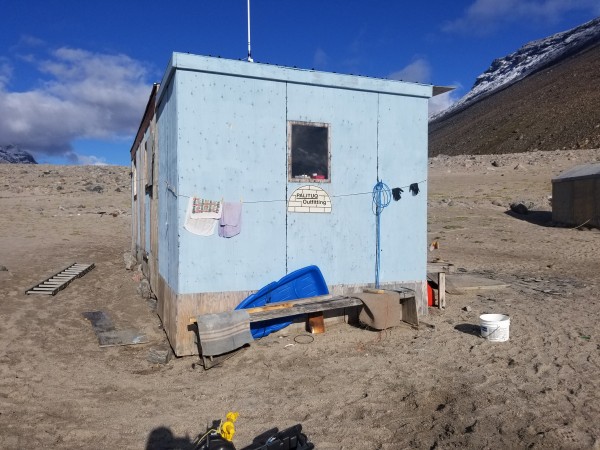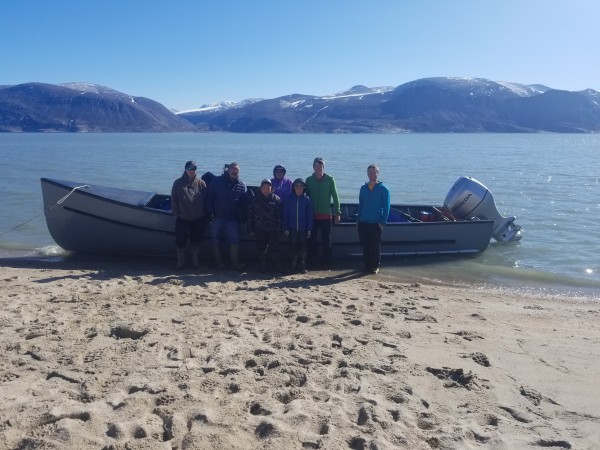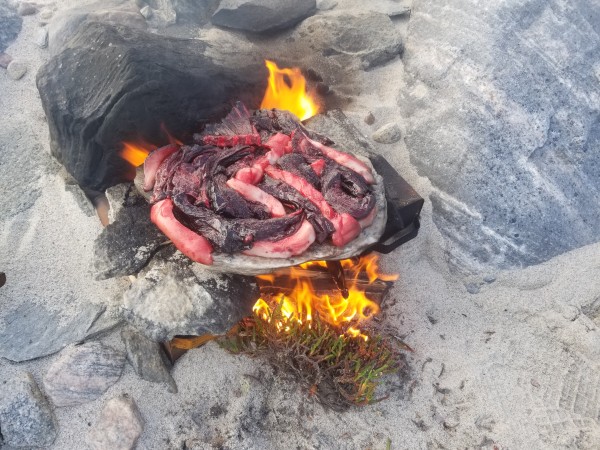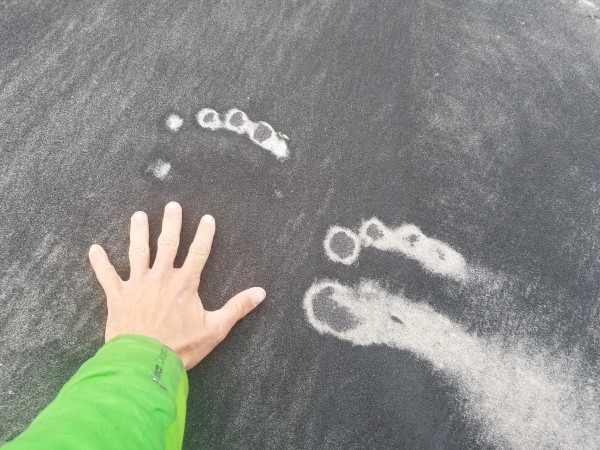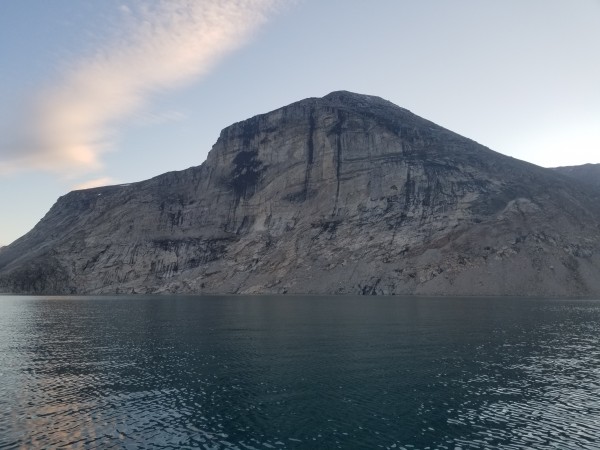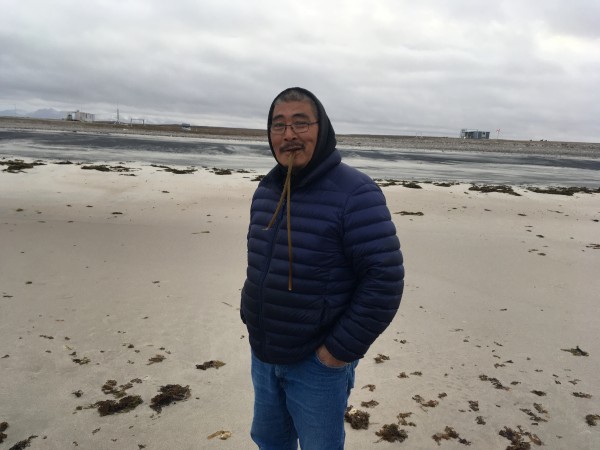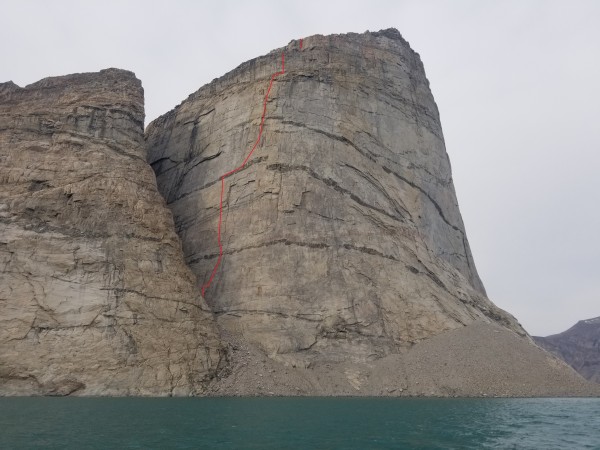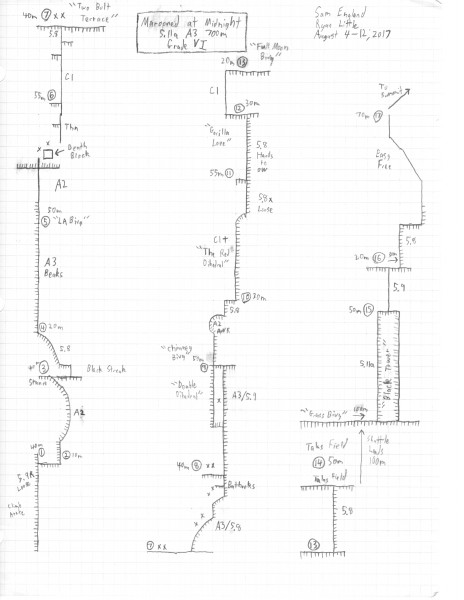Umiguqjuaq Wall, Clyde Inlet, Baffin Island
First Ascent: Sam England and Ryan Little August 4-12, 2017
June 16
Ryan Little and I clink whiskey glasses to celebrate the purchase of our airline tickets, the official commitment to the Baffin 2017 Trip. What the hell have we gotten ourselves into? After many years of discussion, we had finally pulled the trigger. Two engineers from Alabama attempting a big wall first ascent in the Arctic. It was hard not to think we might be in over our heads.
Our hope was to arrive in Clyde River just after the ice breakup. We would go to the Sam Ford Fjord by boat, climb the Chinese Wall, and return to Clyde River by boat before Fall/Winter conditions arrived.
August 1-2
We load up the car with everything we could possibly need including 6 weeks worth of food and drive 18 hours, through the night, from our hometown of Huntsville, Alabama to the Ottawa Airport. We fly directly to Iqaluit, NU then on to Clyde River. Nerves were high as we got off the plane onto the gravel runway/airfield. Our outfitter, Levi Palituq, had arranged for his brother to pick us up at the airport. He took us into town and introduced us to Levi.
Due to sea ice conditions, Levi was unable to take us into Sam Ford Fjord yet. After much discussion and studying of maps, We decided to head deep into Clyde Inlet to explore an area not yet visited by climbers (to our knowledge). We would head there when the wind died down.
At around 10pm, after having already not slept the night before, we load everything up into Levi's boat. The winds have died and our chance to get to the climbing was now. We motored across the inlet for several hours. As we moved deeper into the inlet, the cliffs began to grow. The inlet split, and a huge buttress rose up out of the ocean. There were many other walls but this seems to have the best looking rock. We look around for a place to unload the boat that we can eventually make into a basecamp. The best we find is a steep talus field, surrounded by the wall and the ocean, about the size of a football field. Levi drops us off here under the midnight sun. We unload the boat and are at the base of the wall 40 hours after leaving Alabama.
August 3
After sleeping in, we spent the day making a basecamp. The talus field had no level spots so we had to work hard to make a tent platform, cooking table, and some seats. We explored the extent of the accessible wall and scouted about 5 potential lines. None of them looked that promising, mostly small to medium sized features that would probably require much drilling to connect. We finally settled on a series of dihedrals on the southern side of the buttress adjacent to a steep gully draining with our water source. Having not planned to visit this area, we did not have the correct topographic maps, didn’t know how tall it was and couldn’t get a great view of the entire wall on the way in. We didn’t even know if a walk off descent was possible down the adjacent gully. All we knew was what we could see while looking straight up from the base.
August 4
No more deliberating, time to get started. We carried our first load to the base and I led up the first pitch, a loose, poorly protected 5.9 corner. I brought Ryan up and he led a short traverse to gain the first major dihedral we hoped to climb for several pitches. We fixed a single rope to the ground and returned to our basecamp.
August 5
With hopes of blasting off, we carried the rest of our kit to the base. We jugged and hauled to our high point. Ryan took off and led the A2 3rd pitch corner. Somewhere along the lines we broke a water bottle. Doing some preliminary “big wall math,” we decide to tie our ropes together and rappel 100m down to the ground to spend one more night in basecamp.
August 6
We woke up early and found blue bird skies. We jugged back up to our kit and I led another runout, loose, free pitch, pulling loose blocks out to place gear as I went. The corner thinned out and Ryan took over for the next pitch. A long pitch of A3 beaking brought us to our camp for the night. An anchor made with good cams in the dihedral didn’t allow for an easy portaledge set up. Luckily there was a seam in the face next to it. A hanging bivy on lost arrow pitons.
August 7
With a thin seam and a roof above, I set off on pitch 6. The improbable looking roof was dispatched with ease. I was moving along, enjoying a beautiful, A2 splitter on solid rock, until a short traverse across a thin seam. I grabbed a knifeblade and began to nail the traverse when suddenly, the crack widened. The sound of sand and gravel falling could be heard from within the wall. More cracks appeared and I realized I was wedging off a refrigerator sized block. Not wanting to weight the block and having no other options, I had to pull out the drill for the first time on the route. Two rivets were placed to get around the death block. I continued up a perfect splitter 000 sized crack until the rope ran out. Ryan came up and continued up the seam, which eventually became ledgy enough to allow free climbing. Above we could see what appear to be a parking spot sized ledge. Unfortunately, it was a ledgy, uneven terrace without a single crack. Ryan was forced to drill a 2 bolt belay just as the rain began. Thus began our stay at the two bolt terrace.
August 8
Rain and wind all morning. We took the time to enjoy a rest day, drink some coffee, and explore the terrace of ledges around us. We scouted many possible lines but all involved some amount of X-rated free climbing or significant drilling. We chose a line and organized our kit for an early start as soon as the wall dried out.
August 9
The wall was dry this morning. I began free climbing off of the belay. After 40' of 5.8, I fifi-ed into a small cam in a loose block for balance and drill a rivet. Rurps, rivets, hooks, and the occasional free section brought me to a ledge. This short but involved pitch was very time intensive. In total, 4 rivets, 4 bat hook holes, and 2 belay bolts were drilled. From here we would be able to gain the next double dihedral system. Ryan led the 55m “Double Dihedral” pitch 9 in good style. Free climbing, awkward A3, and a rivet around a loose block brought us to our hanging bivy in a wide chimney.
August 10
I woke up to lead another wandering pitch of mixed free/aid. This positioned us at the base of the most beautiful dihedral on the route, “The Red Dihedral”. Perfect C1 in a corner on slightly overhanging, solid rock. Ryan quickly cruised the corner to it's top. Unfortunately, when the corner ended, the rock quality worsened and he was forced climb 40' of steep, chossy 5.8 with no protection. Up until now, 2 pitches per day had been the pace. It was pretty late but there wasn't a good place to set up the portaledge. The next bit appeared to go free so I set off on the 5.8 hands to offwidth/chimney pitch. As I pulled over the large chockstone capping the chimney, I was glad that dragged the double #6s with us. Above, the steepness seemed to back off. Were we almost to the top? It looked like we had about 50' of C1 to the summit. We decided to continue up into the night just in case this was the top. Ryan was quickly up the 13th pitch to find a large ledge with another headwall looming above. After a huge day, we were excited to open bivy under a nearly full moon.
August 11
We slept in today after our long push last night. Once we finally got the bags packed, I cruised up another pitch of moderate free climbing to gain a large talus field. A short, but very difficult haul onto the ledge and we were able to unrope and explore our options. To the right, we found another corner system that looked promising. To the left, the ledge went all the way to the couloir, our intended descent line, and then up the backside of the summit. Not wanting to walk to the summit from here, we decided we would give the corner system a go tomorrow. After hiking back to the bags, we shuttled loads to the best flat spot and set up our bivy for the night.
August 12
After scoping out our potential line up the summit block, we decided the best plan of attack was to free climb to the summit with 1 rope then hopefully hike off the backside, around the ledge, and return to our bivy site. The first pitch appeared to be probably about 5.9 or 5.10 from the base. Ryan started up what turned out to be a 5.11a pitch that finished with a section of 45 degree overhanging hands. I followed it then led up a techy 5.9 stemming corner to a large ledge. We again explored our options, then Ryan set off on another broken corner system. The rope ran out and I began simul-climbing. Unsure of how long the pitch actually was, Ryan had a strong case of summit fever taking us all the way to the end of the technical climbing.. We changed back into approach shoes and scrambled the last bit to the true summit. Many photos were taken. We spent some time hiking around the summit plateau looking for other possible walls to do. We were all smiles on our hike back to the bivy.
August 13
The day of reckoning has come. We stuffed our monstrous kit into the 2 haulbags and began the slog to the top of the couloir. From the rim, three 60m rappels got us down into the bottom of the couloir. This is where the fun truly began. The talus was not steep enough to rappel but was too unstable to carry the haulbags. We were forced to drag, roll, and throw the bags down 2000' vertical feet of loose talus running with water and interspersed snowfields. After a full day of exhausting work, we were back at our basecamp.
August 14-15
When he dropped us off, Levi told us he would be in the area at his hunting camp. If we wanted a bump to another wall, just to give him a call. With hopes of climbing another formation, we called Levi as soon as we got down. He said he would come as soon as the weather was clear enough. With whitecaps on the water, we knew we could be waiting a while. We took this as an opportunity to practice our marksmanship, go for a swim, and trundle big rocks into the ocean.
August 16
After 3 days, Levi and his family pull up in the boat. We promptly break camp and carry the last of our things down to the ocean. The buttress we intended to climb next looked much chossier from up close. Levi said he knew of another feature and took us to "The Mitten." He intended to head back to Clyde River on 20th and we decided that would be a good time for us to make our return as well. We arranged to get picked up from here on the 19th and return to his hunting camp on our way back to town.
August 17
With only 2 days left, Ryan and I grabbed a free climbing rack, 1 rope, food for 2 days, and no bivy kit. We made the long approach to the base of the "Thumb" portion of "The Mitten." The large spire looked promising, with a significant corner system on the south face. We climbed 10 pitches through very featured terrain up to 5.10a. We made it about 75% of the way to the summit but were turned back knifeblade sized crack that went for several pitches. We scouted around the entire South and East sides of the spire, unable to find something we could free climb. Clouds were gathering, the temperature was dropping, and the wind was picking up. We called it here and began our retreat. We had to leave all of our remaining cordage to get down, no bolts were placed. There were many other good looking lines in the area but we were done. We made it back to basecamp late that night, just before a snowstorm hit.
August 18-25
Levi happened to be in the area hunting and decided to swing by. He offered to take us back to his camp early where we could hang out with his family for the weekend. The Palituqs took us in and made us feel at home. The Arctic Char and Seal meat they prepared were amazing. We were given a cabin to stay in and even got to tag along for some hunting and fishing. We all motored back to Clyde River Sunday afternoon. The next available flight out was Tuesday, the 22 so we had a bit more time. We spent a day resting, exploring the town, and enjoying some Tim Hortons. That evening, Levi and his wife took us to the coast north of town to look for Polar Bears. We only found tracks but did some enjoy some in-season kelp. After much travel shenanigans, including a 2 day layover in Iqaluit, we make it back to Alabama on the 25th.
There are so many amazing people we got support from. We couldn't have done this without y'all.
The American Alpine Club, The North Face, and Clif Bar for providing both Ryan and myself with Live Your Dream grants.
John Middendorf and D4 Portaledges for getting a ledge to us in time for the trip.
Levi Palituq and his family for their outfitting and hospitality.
The communities of Clyde River and Iqaluit for being so friendly and welcoming.
Mike Libecki, Mark Synnott, and Paul Mcsorley for answering all of our stupid questions before our trip.
The Huntsville climbing community for their vision, support, encouragement, and gear loans.
And of course, Maggie and Alexia for being amazingly supportive through our madness.
